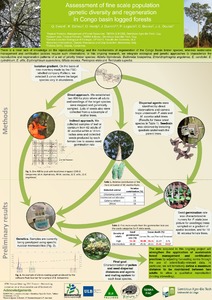Land Use and Cover Dynamics Since 1964 in the Afro‐Alpine Vegetation Belt: Lib Amba Mountain in North Ethiopia
Human‐induced land use and land cover (LUC) changes threaten the ecosystem services of the vulnerable tropical afro‐alpine vegetation. Several LUC change studies are available for the Ethiopian highlands, but relatively little is known about LUC change in the afro‐alpine zones. In this study, LUC changes between 1964 and 2012 were mapped for the afro‐alpine zone of Lib Amba Mountain, part of the Abune Yosef Mountains in North Ethiopia. Historical LUC was derived from georeferenced aerial photographs of 1964 and 1982, and the present LUC (2012) from Bing Map satellite imagery.



